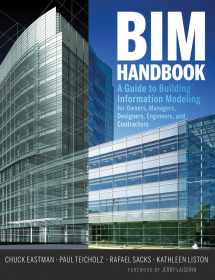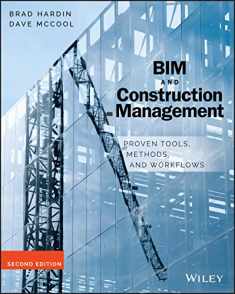
BIM Handbook: A Guide to Building Information Modeling for Owners, Managers, Designers, Engineers and Contractors
Book details
Summary
Description
Discover BIM: A better way to build better buildings.
Building Information Modeling (BIM) is a new approach to design, construction, and facility management in which a digital representation of the building process is used to facilitate the exchange and interoperability of information in digital format. BIM is beginning to change the way buildings look, the way they function, and the ways in which they are designed and built.
BIM Handbook: A Guide to Building Information Modeling for Owners,Managers, Designers, Engineers, and Contractors provides an in-depth understanding of BIM technologies, the business and organizational issues associated with its implementation, and the profound advantages that effective use of BIM can provide to all members of a project team. The Handbook:
-
Introduces Building Information Modeling and the technologies that support it
-
Reviews BIM and its related technologies, in particular parametric and object-oriented modeling, its potential benefits, its costs, and needed infrastructure
-
Explains how designing, constructing, and operating buildings with BIM differs from pursuing the same activities in the traditional way using drawings, whether paper or electronic
-
Discusses the present and future influences of BIM on regulatory agencies; legal practice associated with the building industry; and manufacturers of building products
-
Presents a rich set of BIM case studies and describes various BIM tools and technologies
-
Shows how specific disciplines?owners, designers, contractors, and fabricators?can adopt and implement BIM in their companies
-
Explores BIM's current and future impact on industry and society
Painting a colorful and thorough picture of the state of the art in Building Information Modeling, the BIM Handbook guides readers to successful implementations, helping them to avoid needless frustration and costs and take full advantage of this paradigm-shifting approach to build better buildings, that consume fewer materials, and require less time, labor, and capital resources.


We would LOVE it if you could help us and other readers by reviewing the book
Book review





